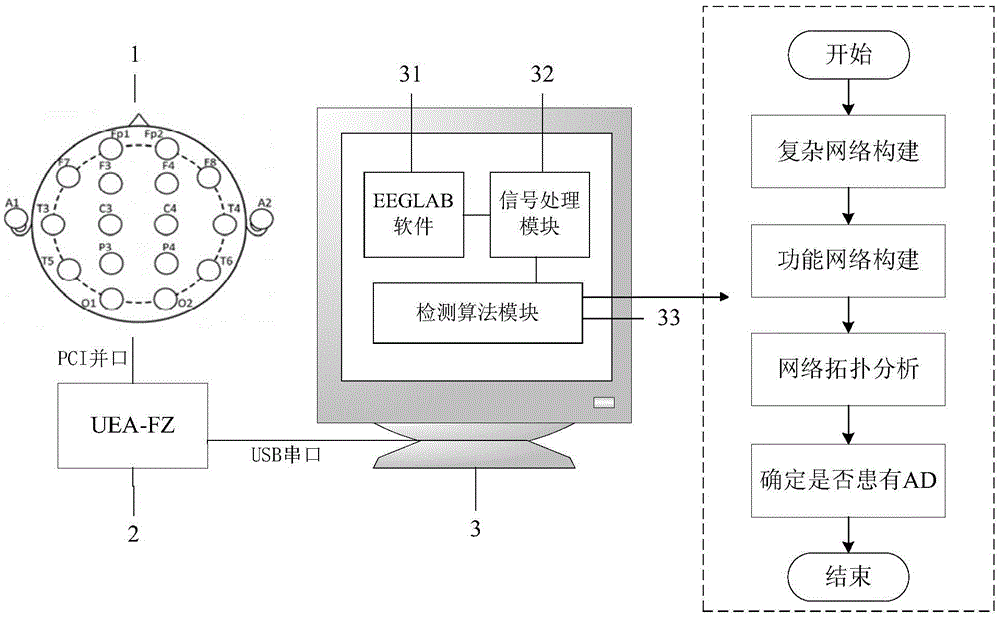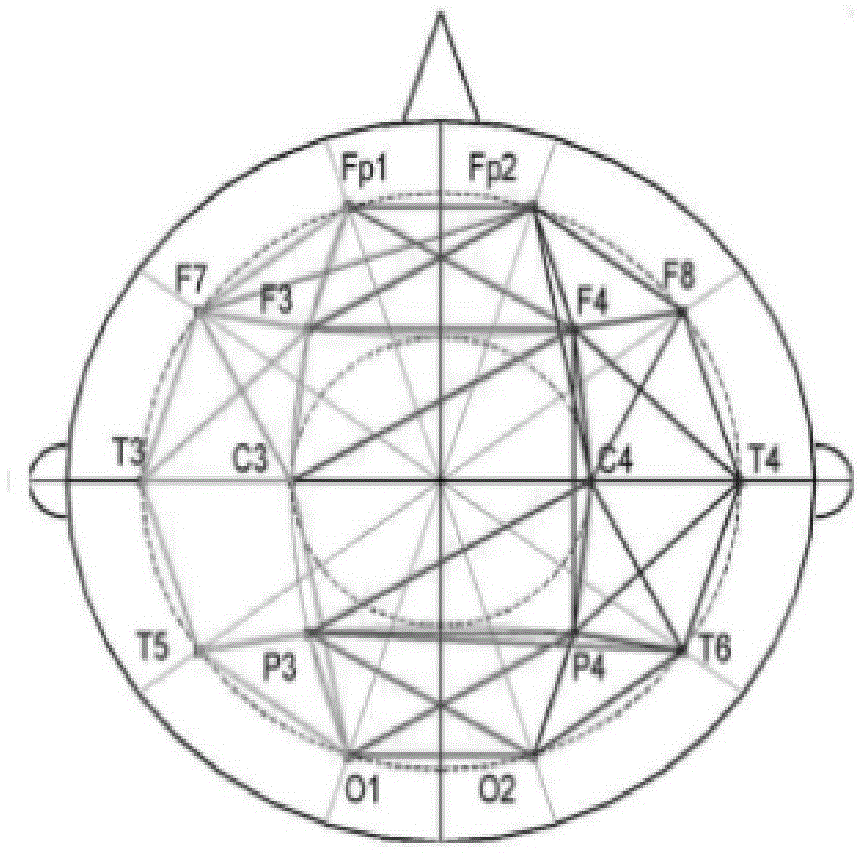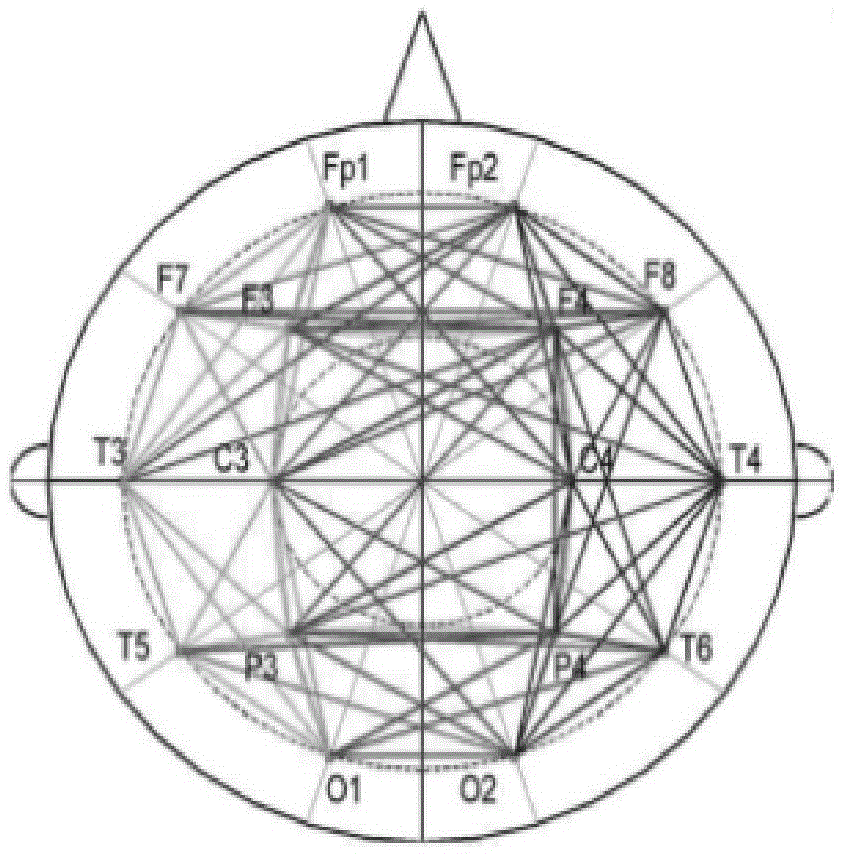Alzheimer's disease detecting system and method based on electroencephalogram signals
An electroencephalographic signal and electroencephalographic technology, which is applied in the field of biomedical engineering, can solve problems such as the inability to effectively reflect the nonlinear characteristics of chaotic signals and the abnormality of brain function networks, and achieve the effect of effective detection.
- Summary
- Abstract
- Description
- Claims
- Application Information
AI Technical Summary
Problems solved by technology
Method used
Image
Examples
Embodiment Construction
[0019] The structure of the Alzheimer's disease detection system based on electroencephalogram signals of the present invention is described in conjunction with the accompanying drawings. The Alzheimer's disease detection system based on EEG signals of the present invention includes an electrode cap 1, a UEA-FZ EEG amplifier device 2, and a data analysis system 3, wherein the data analysis system 3 includes an EEGLab module 31, a signal processing module 32, and a detection system. Module 33,
[0020] Place the electrode cap 1 on the scalp surface of the subject, and the lead sequence is as follows: FP1, FP2, F3, F4, C3, C4, P3, P4, O1, O2, F7, F8, T3, T4, T5, T6. The EEG electrodes were placed according to the international 10-20 standard. The PCI parallel port is connected to the UEA-FZ EEG amplifier device 2, and the 16-conductor EEG signal collected by the electrode cap 1 is imported into the UEA-FZ EEG amplifier device 2, amplified and recorded by it.
[0021] UEA-FZ E...
PUM
 Login to View More
Login to View More Abstract
Description
Claims
Application Information
 Login to View More
Login to View More - R&D
- Intellectual Property
- Life Sciences
- Materials
- Tech Scout
- Unparalleled Data Quality
- Higher Quality Content
- 60% Fewer Hallucinations
Browse by: Latest US Patents, China's latest patents, Technical Efficacy Thesaurus, Application Domain, Technology Topic, Popular Technical Reports.
© 2025 PatSnap. All rights reserved.Legal|Privacy policy|Modern Slavery Act Transparency Statement|Sitemap|About US| Contact US: help@patsnap.com



